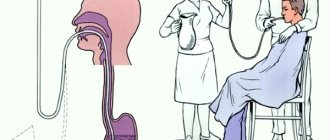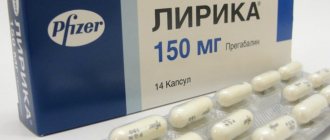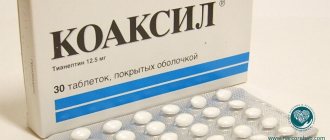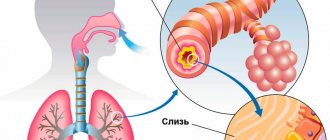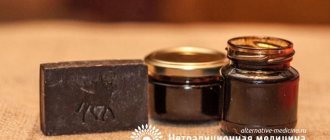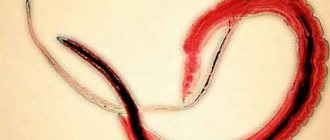Chloroform is a chemical compound that is a colorless liquid that contains chlorine. The substance was first obtained as a rubber solvent. It is also used to produce freon, dyes, and pesticides.
Until the middle of the twentieth century, the liquid was used in surgery and pharmacology as an anesthetic and anesthetic. However, it later turned out that it is very toxic, and also has a rather strong narcotic effect. Poisoning with this drug has a detrimental effect on all organs.
What is the drug Propofol?
Let's figure out what kind of medicine this is - Propofol. This is an ultra-short-acting sleeping pill, i.e. It works practically only while it is administered (or while it is present in the blood in sufficient concentration). Method of administration: intravenous.
The effect of Propofol includes 2 important components - hypnotic and amnesic. This means that under the influence of Propofol a person falls asleep and after waking up does not remember what happened during sleep. Propofol does not provide an analgesic effect, so it must be combined with analgesics.
The main active ingredient of Propofol is 2,6-diisopropylphenol. Its main advantage is that it has the same effectiveness as some other previously used drugs, but is safer, provides an easier recovery from anesthesia and fewer side effects.
The substance is insoluble in water, therefore it is used in the form of an aqueous emulsion of oils in which the active ingredient is dissolved (currently soybean oil). It appears as a white liquid resembling milk.
Name
The name of this substance has several varieties. After all, like all organic compounds, it obeys the laws of the general nomenclature of molecules, trivial names and a name based on the composition of the molecule.
Therefore, there are several possible names for chloroform:
- carbon trichloride;
- chloroform;
- trichloromethane.
Chloroform: what is it? You can understand it from the names of the compounds, or you can consider the geometric structure of the molecule.
What group of drugs does Propofol belong to?
Propofol is a drug whose purpose is to induce and maintain general anesthesia, as well as sedation during mechanical ventilation. Chemically, Propofol (more precisely, its main active ingredient diisopropylphenol) is a phenol molecule with two isopropyl groups attached to it. It is not included in the groups of barbiturates or opioids, it is not a narcotic drug, therefore it is not characterized by the severe side effects of drugs from these groups.
Chloroform price, where to buy
Many people are interested in where they can buy Chloroform and whether it is possible to buy medical Chloroform in a pharmacy. Since all sedatives used in anesthesiology are dispensed either by prescription or according to special lists for medical institutions, they are not sold in regular pharmacies.
Websites of manufacturing companies and some online pharmacies offer to order the drug.
You can buy Chloroform in Ukraine for 97-150 UAH per 1 liter. The drug from the Chinese manufacturer Ruiyuan Group Limited in St. Petersburg or Moscow is sold for an average of 3200-3550 rubles.
The product from the Australian company Dentalife sells for $60 per package. At the same time, it can be delivered to all major cities of the CIS (in particular, to Kyiv, Moscow, St. Petersburg).
How does the drug affect the body?
The mechanism of action of Propofol has not yet been fully studied. Its main effect is associated with the fact that it enhances and prolongs the action of GABA (gamma-aminobutyric acid), an amino acid that plays the role of an inhibitory neurotransmitter in the central nervous system, responsible for calm, relaxation and sleep.
When administered, Propofol begins to act almost immediately - it instantly penetrates the brain and causes rapid onset of sleep. Next, a maintenance dose of the drug is administered through an intravenous catheter. An anesthesiologist, using special equipment, controls the depth of sleep, the dosage of incoming medication, the patient's breathing, blood oxygen saturation, blood pressure and heart rate. After completing the treatment procedures, the supply of Propofol is stopped, and the patient wakes up after 5-10 minutes as if from a normal sleep.
Cleaning
Once chloroform is obtained, it needs to be purified. After all, if it is used for medical purposes, then the content of impurities in it is simply unacceptable. If the purpose of use is technical, then the content of foreign substances should be limited.
There may be various impurities that chloroform contains. What it is? What are they?
- Ethanol.
- Hydrogen chloride.
- Phosgene.
- Chlorine.
There are two main ways to purify chloroform from these impurities:
- abundant rinsing with water followed by drying (allows you to completely get rid of ethanol);
- trichloromethane is washed with a strong acid, then with a strong alkali, then with water. Subsequent processing consists of drying using a water-removing agent - calcium chloride. The substance is then distilled in a fractional column.
How long does Propofol take to leave the body?
Propofol is eliminated through its breakdown in the liver with the formation of inert metabolites and further removal through the kidneys. Only 1-2% of propofol is excreted unchanged. The time it takes to remove half of the substance contained depends on the duration of its administration.
The fact is that the substance penetrates unevenly into different tissues. At the very beginning of the administration of the drug (so far it has penetrated only into tissues directly supplied with blood through large arteries), it takes from 1 to 8 minutes for its concentration to drop by half after stopping the supply.
If Propofol is administered within 8 hours, then it has time to penetrate all tissues of the body, therefore, when the supply is stopped, it begins to enter the blood from those tissues into which it penetrated slowly over all these hours, and therefore the same half-life is already increasing up to 40 minutes. The drug is completely eliminated from the body after a few hours.
Chemical properties
Like all chlorinated derivatives of methane, chloroform does not exhibit chemical activity. Therefore, there are few reactions that are characteristic of it. For example, treatment with chlorine molecules in the process of technological production of all methane derivatives by chlorination. To do this, liquid chloroform is taken, the reactions proceed according to a radical mechanism, requiring the presence of ultraviolet radiation as a prerequisite and light quanta.
CHCL3 + CL2 = CCL4 + HCL
The reaction equation shows that the product is completely chlorine-substituted methane - carbon tetrachloride. Such reactions are one of the ways to produce carbon tetrachloride in industry.
Chemical properties also include an azeotropic mixture with water, which chloroform can produce. What it is? That is, one in which the components of the solution do not undergo any changes when boiling. It is impossible to separate such a mixture into fractions using the boiling method.
Another type of reaction that chloroform can undergo is the replacement of halogen atoms with other atoms or functional groups. For example, when reacted with an aqueous solution of sodium hydroxide, it forms sodium acetate:
chloroform + NaOH(aqueous solution) = sodium acetate + sodium chloride + water
In addition, a practically significant reaction is the interaction of chloroform with ammonia and potassium hydroxide (concentrated solution), since as a result of such interaction potassium cyanide is formed.
Chloroform + ammonia + potassium hydroxide = KCN + potassium chloride + water
Consequences and side effects
The drug is safer than many of its previously used analogues. However, it also has accompanying actions. Side effects of Propofol include:
- arterial hypotension (low blood pressure),
- bradycardia (slow heart rate),
- depression of respiratory function (up to short-term apnea).
In rare cases, convulsions, allergic reactions may occur, and after waking up - nausea, vomiting, and headache. The vast majority of patients have a completely normal reaction to Propofol.
To minimize side effects, a doctor should prescribe Propofol based on preliminary tests, which should determine how safe the use of this drug is for a particular patient.
In addition, constant monitoring of the patient’s condition under anesthesia and the availability of resuscitation equipment in the clinic, incl. apparatus for artificial ventilation of the lungs.
Propofol can only cause harm if the permissible dosage is exceeded. But provided that the drug is prescribed correctly and the anesthesiologist is equipped with all the means necessary for control, the occurrence of such a situation is excluded.
Recommended dose of Propofol
The dosage of Propofol depends on age, body weight, and various individual characteristics. The starting dosage for sleep induction for the average adult is approximately 40 mg every 10 seconds, or 2-2.5 mg/kg body weight. For children over 8 years of age, approximately the same dosages are used; for younger children, higher doses are possible.
The maintenance dosage to maintain anesthesia is 4-12 mg/kg/h for adults and 9-15 mg/kg/h for children.
Use of propofol
Medication-induced sleep during dental treatment is used in several cases. First of all, this is dental phobia - a pathological fear of dental treatment. This is not just a fear that a strong-willed adult can cope with. As a rule, this is a series of involuntary nervous and physiological reactions that a person cannot control. In addition, a long complex operation, even in the absence of pain, often causes stress and deterioration of physical condition - increased stress on the heart and vascular system, exacerbation of chronic diseases, etc. Therefore, indications for the use of Propofol include:
- dental phobia,
- long operations with a high level of injury,
- increased sensitivity to pain,
- inability to establish contact with a doctor in some patients.
The drug is used to induce medicinal sleep in both adults and children, and even children under 1 year of age are not an obstacle.
Receipt
Chloroform is produced in several ways.
1. A multi-stage process of methane chlorination, which occurs by a radical mechanism under the influence of ultraviolet light and high temperature. The result is not only chloroform, but also three other products: chloromethane, dichloromethane and carbon tetrachloride. The reaction looks like this:
CH4 + CL2 = CH3CL + HCL - chloromethane and hydrogen chloride are formed
CH3CL + CL2 = CH2CL2 + HCL - dichloromethane and hydrogen chloride are formed
CH2CL2 + CL2 = CHCL3 + HCL - trichloromethane (chloroform) and hydrogen chloride are formed
CHCL3 + CL2 = CCL4 + HCL - carbon tetrachloride and hydrogen chloride are formed
In this way, trichloromethane is synthesized in industry.
2. Interaction between bleaching lime and ethyl alcohol. This is a laboratory method.
3. Preparation of chloroform by electrolysis (action of electric current) on alkali metal chlorides in an atmosphere of acetone or ethyl alcohol. Also a laboratory method for producing trichloromethane.
Contraindications to the use of Propofol
The drug cannot be used by everyone. Absolute contraindications for the use of Propofol are:
- presence of allergies to the components of the drug,
- children's age up to 1 month.
It is also not recommended to use Propofol during pregnancy, because it penetrates the placental barrier. During the feeding period, the use of the medicine is allowed, provided that the woman does not feed for several hours after using the drug.
Relative contraindications for Propofol:
- serious diseases of the cardiovascular system,
- respiratory diseases,
- pathologies of the liver and kidneys,
- anemia,
- epilepsy,
- lipid metabolism disorders.
In all these cases, consultation with a specialized doctor is necessary. In case of stable remission of the disease, in the absence of a conflict between Propofol and the medications taken by the patient and some other circumstances, the doctor may authorize the use of Propofol.
Literature:
- The influence of sodium hydroxybutyrate on the conduction of excitation in the afferent pathways of the celiac nerve: Abstract of thesis. for the academic degree of Candidate of Medical Sciences / Churyukanov, V.V. / 1st Moscow. honey. Institute named after I. M. Sechenov. - Moscow: 1966. - 14 p.
- The influence of sodium hydroxybutyrate on the activity of some narcotic and non-narcotic analgesics: (Experimental and clinical studies): Abstract of thesis. for the degree of Candidate of Medical Sciences. (14.00.25) / Lapin, Robert Alexandrovich. / Sverdl. state honey. int. - Sverdlovsk: 1973. – 24 p.
- On the pharmacology of sodium hydroxybutyrate: Abstract of thesis. for the degree of Candidate of Medical Sciences. (775) / Kondrashin, A. D. / Sverdl. state honey. int. — Sverdlovsk: [b. i.], 1970. – 22 p.
Need some advice?
OR CALL A DOCTOR
CALL!
+7
Analogs
Propofol can, if necessary, be replaced with other drugs of similar action. Propofol analogues from the group of non-inhalational anesthetics:
- brietal,
- hexenal,
- ketamine,
- hypnomidate.
These drugs have a comparable effect in terms of mechanism and results (stimulation of GABA and suppression of excitatory neurotransmitters), but it must be borne in mind that almost all of them have more severe side effects and provide a more difficult recovery from anesthesia (drowsiness, headache, confusion, hallucinations etc.) compared to Propofol. In addition, not all of them can be used in childhood.
Of the inhaled analogues of Propofol, Sevoran has proven itself well. This drug has the same effect, is slightly more effective and safe, but it is a gas and the method of administration is less convenient - inhalation.
Propofol is currently the most successful drug for anti-stress treatment in dentistry, widely used for both adults and children of all age groups.
Content:
- Characteristics
- Action
- Impact on women
- Consequences of use
- Risk of overdose
Butyrate (Pinocchio, lemonade, boutique, bottle, dance water, Ksyukha, traffic jams) is a psychoactive substance from the group of nervous system depressants.
In small doses, the effect of butyrate on the body resembles the effects of taking alcohol or ecstasy. Overdose is fraught with life-threatening complications.
